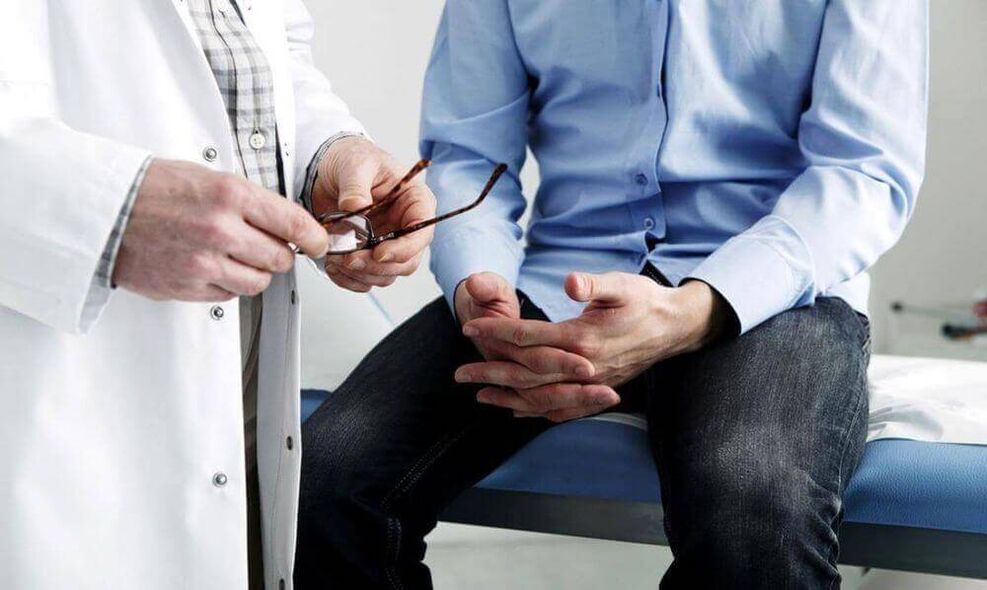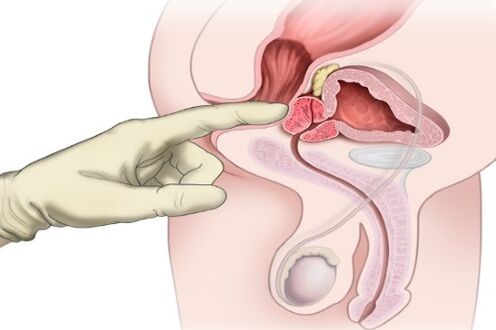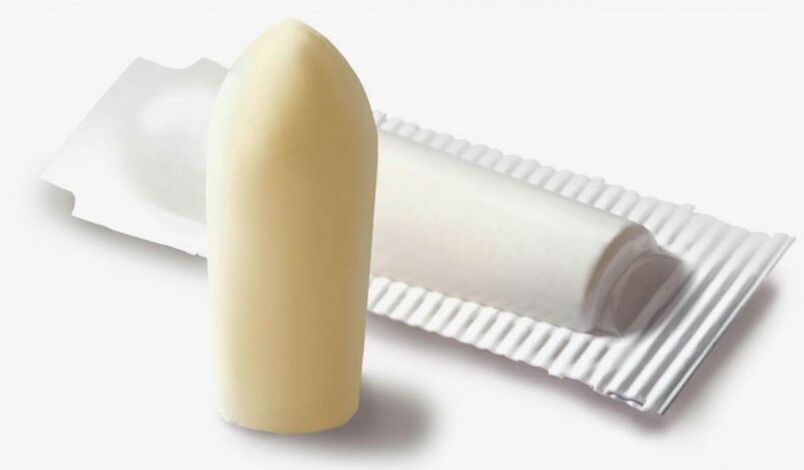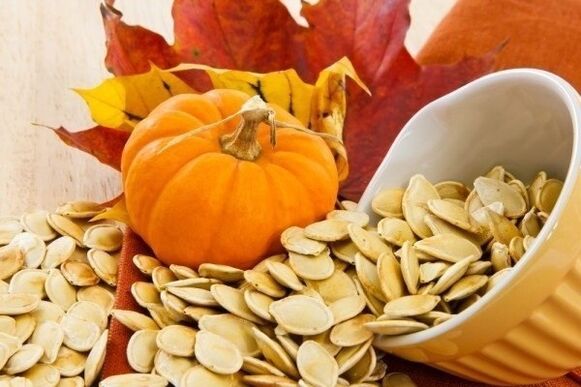Prostatitis is characterized by inflammation of the prostate tissue, caused by the development of hyperemia of the prostate tissue.
In the modern world, it is the most common urinary system disease among men of all ages. According to statistics, after the age of 30, prostatitis accounts for 30%, 40-40%, and 50-50% of the male population, decreasing in turn.
However, considering the particularity of the diagnosis and the possibility of the disease developing in a latent form, the actual number is much higher.

Reasons for development
At present, the reasons for the development of prostatitis are divided into two categories:
- Infectious-(Sexually transmitted infection (pathogens invade prostate tissue-microorganisms, viruses, bacteria, fungi, etc. ): There are also chronic infections (chronic tonsillitis, sinusitis, kidney pathology), surgical pelvic organs, etc. ).
- Non-infectious (stagnation) (decreased immunity, hypothermia, reduced physical activity, sedentary lifestyle, long-term abstinence and vice versa, excessive sexual activity, alcoholism, etc. ).
Injury, impaired blood and lymph circulation of the pelvic organs, hormonal disorders (absolute or relative androgen deficiency) promote the development of prostatitis.
Therefore, it needs to be emphasized that the entry of pathogens into organs and tissues alone is not always and not necessarily the cause of disease development. The most common pathogen is Escherichia coli (86%), followed by Klebsiella, Proteus, Enterococcus, and Pseudomonas aeruginosa. Regarding Streptococcus, Staphylococcus, Chlamydia, Mycoplasma, and Ureaplasma, researchers have different views on their importance in disease development. It is extremely rare that specific pathogens (treponema pallidum, Kochella, etc. ) become the cause of prostatitis.
Classification
The classification of prostatitis currently adopted internationally is the most complete, covering all types of inflammation:
- the first sort. Acute prostatitis;
- The second category. Chronic bacterial prostatitis;
- The third category. Non-bacterial chronic prostatitis/chronic pelvic pain syndrome-a disease in which no infection has been detected that lasts more than 3 months;
- Subclass III A. Chronic inflammatory pelvic pain syndrome (white blood cells are measured in the secret of the prostate);
- Subcategory III B. Chronic non-inflammatory pelvic pain syndrome (there are no white blood cells in the secret of the prostate);
- The fourth category. Asymptomatic chronic prostatitis (white blood cells exist in the secret of the prostate, the patient has no complaints, the disease was discovered by accident).
First sign
The main symptoms of acute prostatitis are increased body temperature and frequent urination, accompanied by cramps and weak pressure. In addition, signs of prostatitis include a burning sensation in the perineum and rectal pain during defecation. In the stage of purulent inflammation, the abscess opens spontaneously and pus flows out of the urethra or rectum.
The symptoms of the chronic form are burning pain in the urethra and perineum, discharge of pus at the end of defecation or urination, and increased physical fatigue and irritability.
Difficulty urinating in prostatitis is very dangerous. If left untreated, it can lead to acute urinary retention. Men should not ignore the indirect signs of the development of prostatitis, such as complete or partial decline in libido, accelerated ejaculation, sometimes pain, and prolonged erection time at night. All these symptoms are the characteristics of prostate inflammation, even in the uncomplicated stage, it can be treated appropriately.
symptom
If it is impossible to not pay attention to acute prostatitis, then in chronic prostatitis, many people will not notice certain signs or pay no attention to them.
Let us list the main symptoms of male prostatitis:
- Problems with urination. As the urethra narrows, the jet may become slow, thin, or intermittent. To empty, the patient must work hard, which should not be normal. Sometimes the urine must be squeezed out drop by drop, especially in the initial stages of urination. Painful feelings often happen. Many patients often have the urge to urinate (especially at night), which is caused by irritation of nerve endings. Even after going to the toilet, many people feel that the bladder is not completely empty, which is caused by enlarged prostate and bladder compression. In severe cases, involuntary urine leakage or urinary incontinence may occur.
- Painful feeling. Usually, they are located in the perineum, pubic bone or testicles, groin or waist. Pain can happen suddenly and disappear quickly, usually they are very strong, but more often it is a dull or painful feature.
- Sexual problems will inevitably arise. First, libido will drop significantly. Second, erectile problems may occur. Third, due to ejaculation (ejaculation) problems, the average duration of sexual intercourse will change: it may be shorter due to premature ejaculation, or longer due to delayed ejaculation. Fourth, the feeling will also change, because the orgasm will not be very bright. Fifth, the amount of semen will be significantly reduced (maybe only a few drops, which is abnormal).
- Another characteristic symptom is pregnancy problems. If a man is planning to have a child, he has prostatitis, and fertilization becomes impossible due to the non-motility or insufficient mobility of sperm.
- Excreted from the urethra. They are usually white, sticky in texture, and are most common in the morning.
- In the acute course, there are similar manifestations such as increased body temperature (up to 38-39°), fever, deterioration of the general condition, weakness, and malaise. These symptoms of prostatitis usually appear suddenly without any prerequisites.
In addition, many people have psychological problems related to the above symptoms. A person may become insecure, his self-esteem will be greatly reduced, he will be depressed or irritable and nervous. Many representatives of strong genders are ashamed of such subtle issues and believe that there is no need to talk about them and hide everything in their hearts. This can bring a lot of psychological stress, change behavior, and in some cases can lead to depression or neurasthenia.
Chronic prostatitis
Many men do not pay much attention to the early manifestations of prostatitis. These are inconspicuous pain in the bladder area and often want to go to the toilet. Violation of normal ejaculation and erection is related to the stronger sex as you get older, so you should not rush to see a doctor. This reckless attitude leads to the development of chronic prostatitis.
Therefore, we have listed the common symptoms of various forms of chronic prostatitis:
- Feeling of urethral discomfort and cuts during urination or sexual intercourse, and slight serous purulent discharge in the urethra (mainly after long-term urinary retention).
- Perineal "pain" and heavy forms of discomfort or/and moderate pain that appear or worsen after drinking alcoholic beverages, physical activity, or sexual intercourse. Sometimes they are short-lived paroxysmal in nature.
- Decreased fertilization ability is caused by increased acidity of secretions, decreased or lack of sperm motility, and head agglutination (glue).
- Sudden and frequent urges to urinate (sometimes as many as 3 times in an hour) and the feeling of insufficient bladder emptying can be explained as a violation of the prostate, its muscle fibers and the nerve regulation of the bladder.
- Pain during orgasm or blurred orgasm feeling, ejaculation disorder, manifested as premature or otherwise prolonged intercourse. These phenomena are related to the inflammatory process or scars caused by inflammation in the semen nodule area.
In order to diagnose this disease, you need to see a urologist. With the help of the test, the doctor makes a diagnosis and prescribes a course of medication.
diagnosis
In order to make an accurate diagnosis, men need to be examined and tested by a doctor. With prostatitis, the patient will feel pain from palpation of the perineum. Internal palpation of the rectum revealed swelling in the prostate area, which became dense to the touch. The patient complained of problems with the genitourinary system. After collecting the medical records, the patient needs to go through detailed blood tests to determine whether there is excess protein, increased white blood cell count, and prostate antigen.
In order to rule out the infection, the patient must pass a urethral smear. The laboratory will inoculate the identified bacteria and test their sensitivity to certain types of antibiotics. In order to obtain an accurate picture, an ultrasound examination of the pelvic organs is required. It clearly shows inflammation and enlargement of the prostate. If the glands are growing strongly, you can see residual urine in the bladder on the ultrasound.
After all tests and examinations are passed, the man will be fully diagnosed and treated.
Medications for the treatment of male prostatitis: a list
Comprehensive treatment of various types of prostatitis may include different combinations of the following methods:
- Immunocorrective treatment;
- Antibiotic treatment
- Hormone therapy
- Various physical therapy procedures;
- Prostate massage
- Lifestyle changes;
- Surgical intervention, etc.
Medications for treating prostatitis include various medications, including antibiotics:
- Alpha blockers;
- Hormonal drugs;
- Muscle relaxant
- Immunomodulator
- Rectal suppositories;
- Antibacterial drugs.
When treating with antibiotics, priority is given to fluoroquinolones and macrolides because they can accumulate in the prostate tissue at the required concentration.
- Fluoroquinolones.
- Macrolides.
- Not commonly used: penicillins, cephalosporins, tetracyclines.
Prostate massage
Prostate massage showed good results. The glands are affected complexly. First, the secret of inflammation accumulated in the prostate can be removed from the body (it is released during the massage process). Improving blood circulation through these operations allows you to cope with various stagnations and also helps antibiotics to penetrate the glandular tissues well.

A set of exercises
Prostate exercise:
- Exercise is definitely not difficult for treatment and prevention. It involves squeezing and relaxing the anal muscles. It is these muscles that are responsible for stopping the flow of water when urinating. Try to contract and relax muscle groups. This will increase blood flow to the gland area.
- Use contrast showers to improve blood circulation. To do this, direct the water flow to the perineum. First is 30 seconds of warm water, then 10 seconds of cold water.
- If there are no acute symptoms, you can massage yourself. This is done to improve blood flow. It is best to exercise while lying down. The massage point is the gap between the anus and the scrotum. The pressure should be firm, but not aggressive. The time is 3-5 minutes.
Be sure to consult your doctor before exercising. Sometimes, their use is absolutely unacceptable.
Immune correction
Decreased immunity can have a negative impact on health.
It is this factor that is one of the foundations for the development and deterioration of the disease. Long-term use of antibiotics is mandatory for lingering prostatitis, and it will also reduce the body's defenses. Therefore, it is recommended that patients consult an immunologist to choose a strategy for immunocorrection.
physiotherapy
The purpose of physiotherapy for chronic prostatitis is to promote blood circulation and remove blood stasis.
For this, the patient receives laser, ultrasound, and magnetic vibration. In some cases, these procedures will be replaced by warm medicine enemas that are regularly given to patients. Recommend sitz bath, mud therapy, mineral water.
Candle
All suppositories used to treat prostatitis have one of the following properties: pain relief (non-steroidal drugs), relief of spasms (based on papaverine), and elimination of inflammatory processes (containing antibiotics).

Alternative methods to treat prostatitis
Treatment of prostatitis at home is only done if there are no complications or chronic recurrence. Traditional methods can increase the body's resistance to infection and relieve pain.
- Pumpkin seeds have long been used by therapists to treat prostatitis. For this situation, they are a very good and very affordable folk remedy. Since these seeds contain a lot of zinc, which is necessary for anyone of any age, they can quickly cure prostatitis. You only need to eat 30 seeds every day before meals. This is the proportion of zinc that the human body consumes every day.
- The seeds and roots of plants are suitable. Boil the crushed plant roots for 10 minutes at a rate of half a cup of raw materials per 1 liter of water. All the broth is drunk evenly, not water. Use 4 teaspoons per cup of boiling water to brew the seeds. Keep in the pan for 40 minutes or in the thermos for 15 minutes. Take one tablespoon about 3-5 times a day.
- The main ingredient is hazelnuts. To treat prostatitis, you need to remove the bark or leaves of hazelnuts. You can brew the two ingredients alternately, alternately. Please note that as long as it is harder, the bark needs to be brewed twice. So, take a tablespoon of hazelnut leaves (or bark) and boil it in a cup of boiling water. Close the lid tightly and wait for half an hour. Then strain and take 1/4 cup 4 times a day. It is best to use fresh branches every time, but you can also use branches that have been used many times. Usually one week of such an operation is enough-the prostatitis will disappear.
- To treat this disease, people made candles and stored them in the refrigerator. For the dough, take 1 teaspoon of honey, 1 egg, and about 3 tablespoons of flour. The components are mixed until smooth, forming a candle. Use morning and evening in 2 courses, 1 tablet 1 month, 10 days apart.
- Use celandine with caution. The plant is poisonous, and overdose can cause severe poisoning. At the same time, the drugs in celandine can remove polyps, tumors, and cysts in the body, and prevent prostate adenomas. Freshly squeezed juice is diluted with equal parts of alcohol. Drink it every day and dilute with 50 ml of water. Start treatment from 1 drop and increase the concentration by 1 drop every day for 60 days. After 10 days, repeat the course.
Most folk remedies are used 1-3 times a day, and the course of treatment is 20-30 days. Home remedies that use herbal medicine last longer because they are milder than medicines, but are safer for the body, especially when accompanied by gastrointestinal diseases. The treatment must be accompanied by gymnastics: leg lifts, squats. It is recommended to walk 15-30 minutes a day.

Complications of prostatitis
Without timely and adequate treatment, prostatitis may be complicated by the following conditions:
- The development of chronic prostatitis;
- Bladder obstruction;
- The development of infertility;
- Recurrent cystitis;
- Narrowing of the urethra;
- Pyelonephritis;
- Prostate abscess;
- septicemia.
Some of the above situations require emergency surgical intervention!
Precaution
Prevention comes down to avoiding predisposing factors. A healthy lifestyle, protected sex and the presence of a partner will reduce the possibility of genitourinary infections. The overall enhancement of the body and the enhancement of immune defense capabilities are also preventive measures for prostatitis.






























